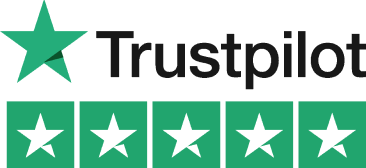Let's simplify this...
Running a business is great, but do you really know how much money you’re actually making?
It’s easy to see sales coming in and think you’re doing well, but without a profit and loss statement, you might be in for a surprise.
This simple report breaks down your income and expenses, showing exactly what’s left after all the costs of running your business. It’s not just for big companies, sole traders need it too, whether it’s for tax time, cutting unnecessary costs, or just making sure your business's financial performance is on track.
Let’s dive in and make sense of your numbers, without the boring accountant talk!
What Is a Profit and Loss Statement?
Ever wondered if your business is actually making money or just breaking even?
That’s where a profit and loss statement (P&L) comes in! Also known as an income statement, this handy financial report breaks down the essentials of your business finances:
Total revenue – Every penny your business has earned.
Expenses – Everything you’ve spent to keep things running.
Net profit (or loss) – What’s left after expenses are deducted.
For sole traders, keeping an eye on this statement is a game-changer. It helps with self-assessment tax returns, shows whether your business is actually profitable, and stops you from unknowingly overspending.
If you don’t love number-crunching, our free Pie Tax app makes it easy to track income, expenses, and profits, so you always know where your business stands, without the headache!

Profit and Loss Statement vs. Balance Sheet: What’s the Difference?
A profit and loss statement (P&L) shows how much your business earns and spends over a period: usually a month, quarter, or year. It tracks revenue, expenses, and profit (or loss) so you can see if your business is actually making money.
A balance sheet, on the other hand, gives a snapshot of your business’s financial position at a specific moment. It lists what you own (assets), what you owe (liabilities), and what’s left (equity) helping you assess financial stability.
In short, your P&L shows performance, while your balance sheet shows financial strength. Both are key for making smart business decisions and staying on top of your finances!
Why Do Sole Traders Need a Profit and Loss Statement?
A P&L statement isn’t just for big companies, it’s a must-have for sole traders too. If you want to keep your finances in check, this report is your best friend.
Tracks your earnings – Helps you understand income trends so you know when to save or reinvest.
Keeps tax time stress-free – Makes reporting income and expenses to HMRC much easier.
Guides smart decisions – Tells you if you need to cut costs or raise prices to stay profitable.
Helps secure loans or investment – If you ever need funding, lenders will want to see proof of steady profits.
Simply put, if you don’t track your numbers, you’re running your business blindfolded. A P&L statement gives you a clear financial picture so you can make smart, informed decisions!

Preparing a Sole Trader Profit and Loss Statement - A Step By Step Guide
Step 1: List Your Total Income
Start with total revenue, also known as sales revenue: this is every penny your business has made. Check your business bank account, invoices, and cash payments to track earnings.
Step 2: Record Business Expenses
Next, list everything you’ve spent on your business. These are your deductible costs, like office costs, marketing, professional fees and insurance. Keeping track of them helps lower your tax bill.
Step 3: Calculate Your Gross Profit
Now for the fun part: figuring out how much you’re actually making before deducting all those pesky business expenses!
Here’s the simple formula: Gross Profit = Total Revenue – Cost of Goods Sold (COGS)
And if your gross profit margin feels a bit too tight, it might be time to tweak your pricing or cut production costs. Just saying!
Step 4: Subtract Operating Expenses
Now, take your gross profit and subtract your operating expenses to get your net profit.
Net Profit = Gross Profit – Operating Expenses
This final figure tells you whether your business is actually profitable or running at a loss. If your net profit margin is low, it might be time to cut unnecessary expenses or rethink your pricing!
Compare Current Period Results with Previous Periods
Looking at your numbers for one period is helpful, but comparing them to previous periods gives the real insights!
Tracking how revenue, profits, and expenses change over time helps you spot trends and make smarter decisions. That's what we want, right?
Key things to track:
Revenue growth – Are sales going up or down?
Gross profit margin – Are costs creeping up and eating into profits?
Net profit margin – After all expenses, is your business actually making more money?
Regularly reviewing your profit and loss statement helps you identify issues, plan smarter, and set realistic goals. The numbers tell the real story, so use them to keep your business on track!

Tips for Keeping Your Profit and Loss Statement Accurate
Want to avoid a last-minute tax panic? Keeping your profit and loss statement accurate doesn’t have to be a headache! Just follow these simple tips:
Use accounting software – Let technology do the hard work for you! Pie Tax makes tracking your income and expenses effortless.
Keep business and personal finances separate – Mixing the two is a recipe for confusion. A business bank account keeps things neat and makes tax time a breeze.
Stay on top of your records – Don’t leave it all until the last minute! Updating your finances monthly will save you stress (and possibly money!).
Check what expenses you can claim – HMRC allows certain costs to be tax-deductible, so don’t miss out on money-saving opportunities! See the full list here.
A little organisation now saves a big headache later, your future self will thank you!
Final Thoughts
Sorting out your profit and loss statement might not be the most exciting part of running a business, but trust us, it’s worth it.
Knowing exactly what you’re earning, what you’re spending, and how much profit you’re actually making puts you in control. It helps with tax returns, smarter decision-making, and making sure you’re not working for free!
And if keeping track of all this feels overwhelming?
Pie Tax has you covered. Our free tax app makes it easy to track income, log expenses, and stay on top of your finances, so you can spend less time crunching numbers and more time growing your business.
Get started today and make tax time a breeze!




